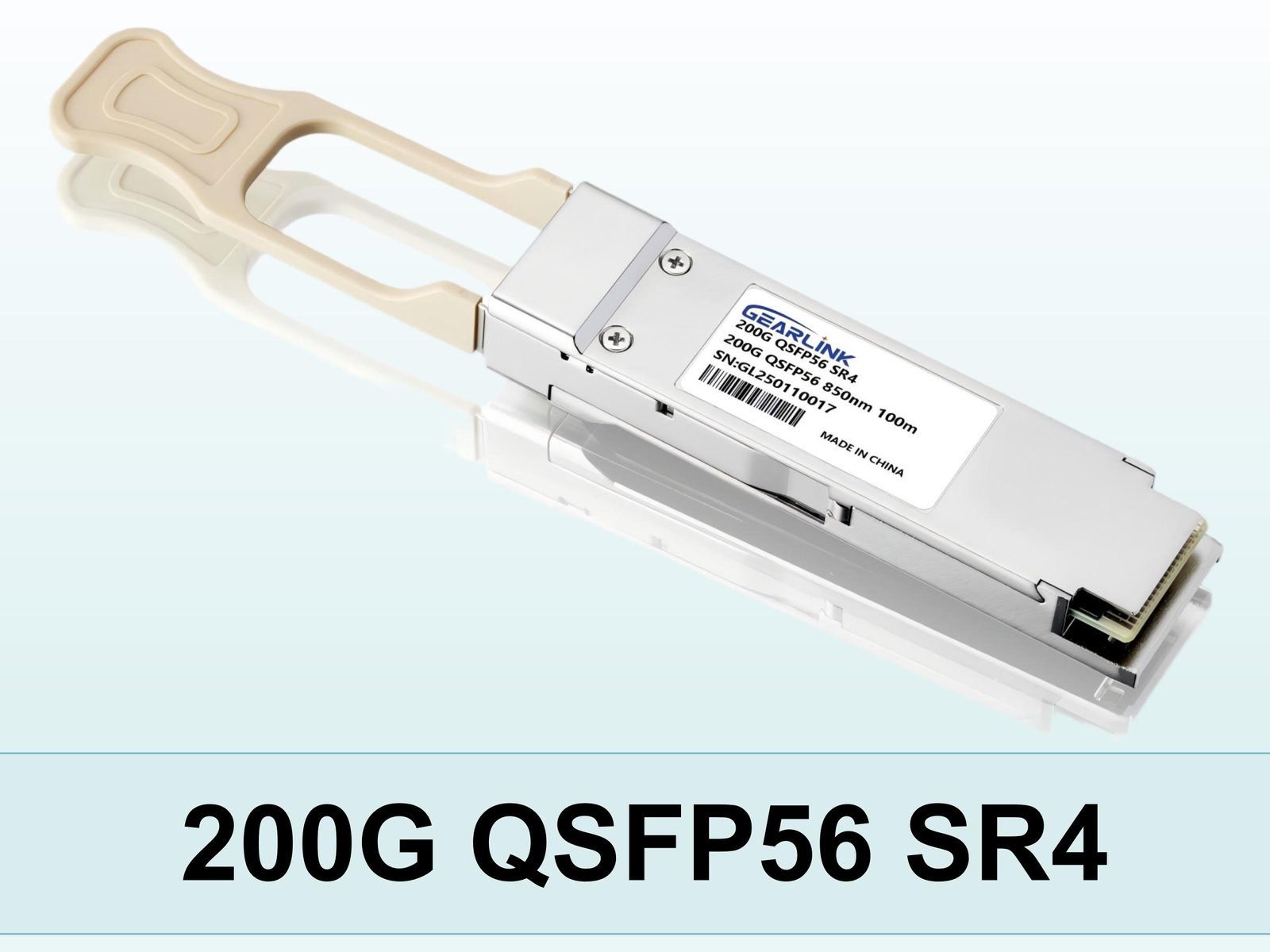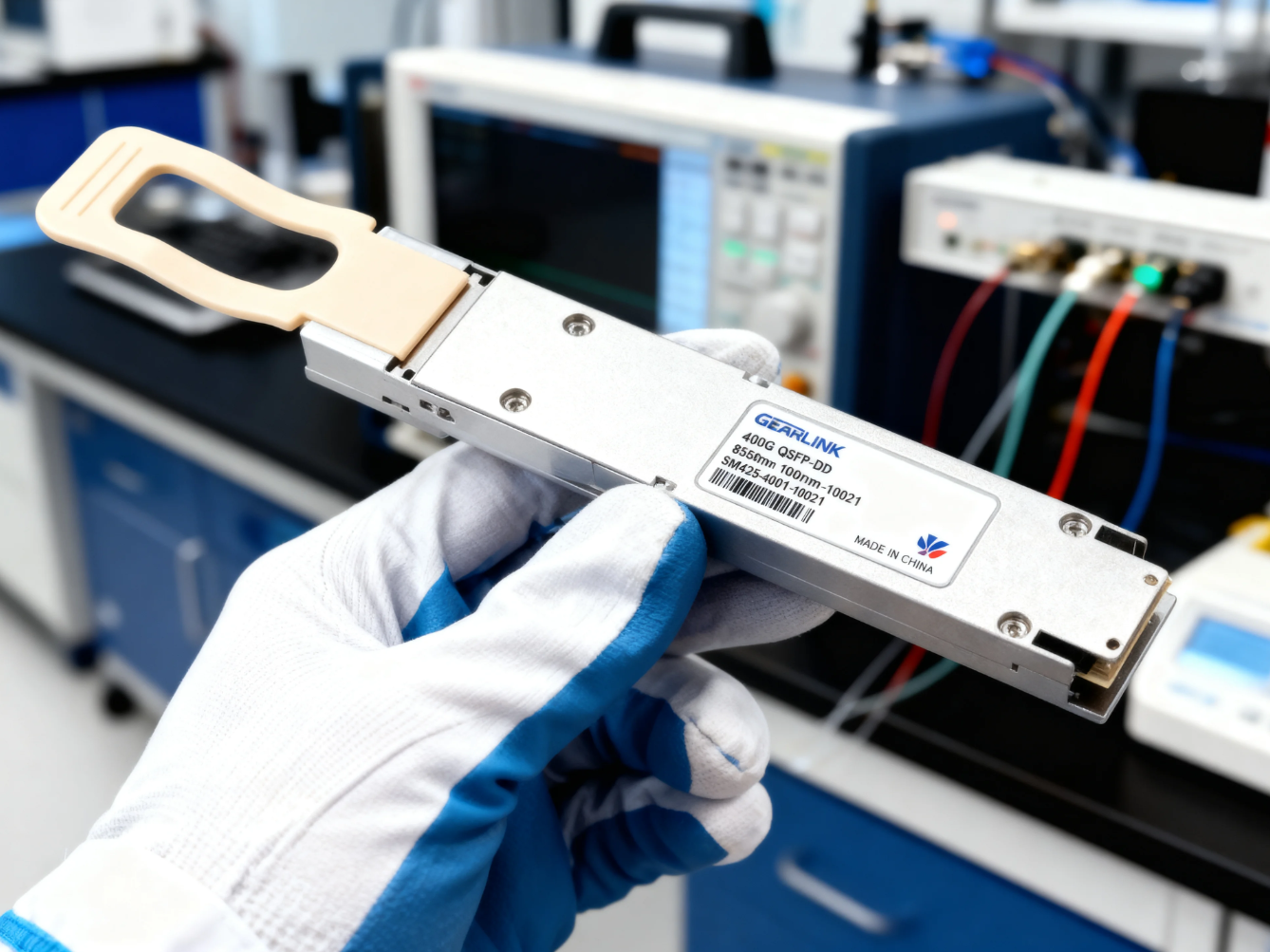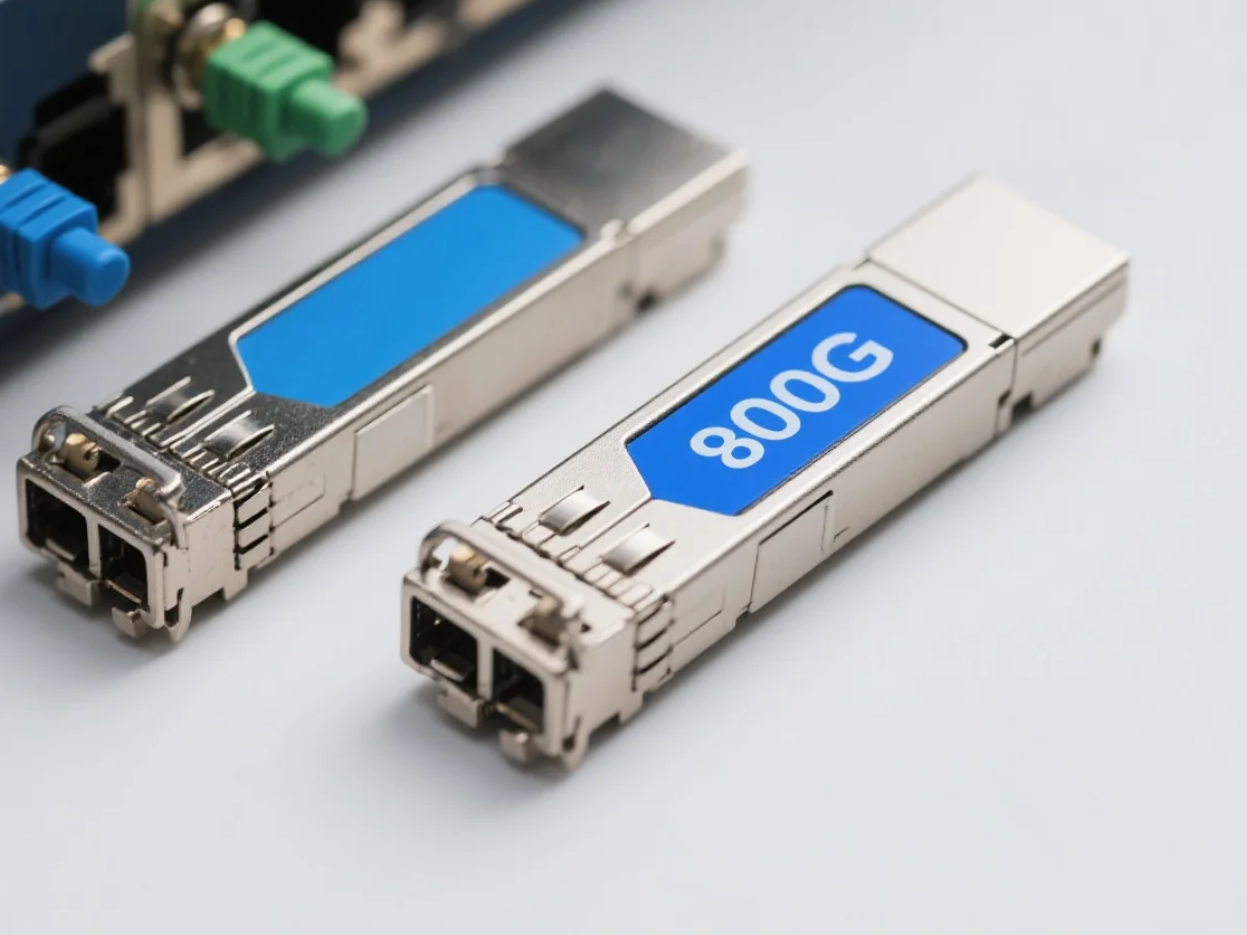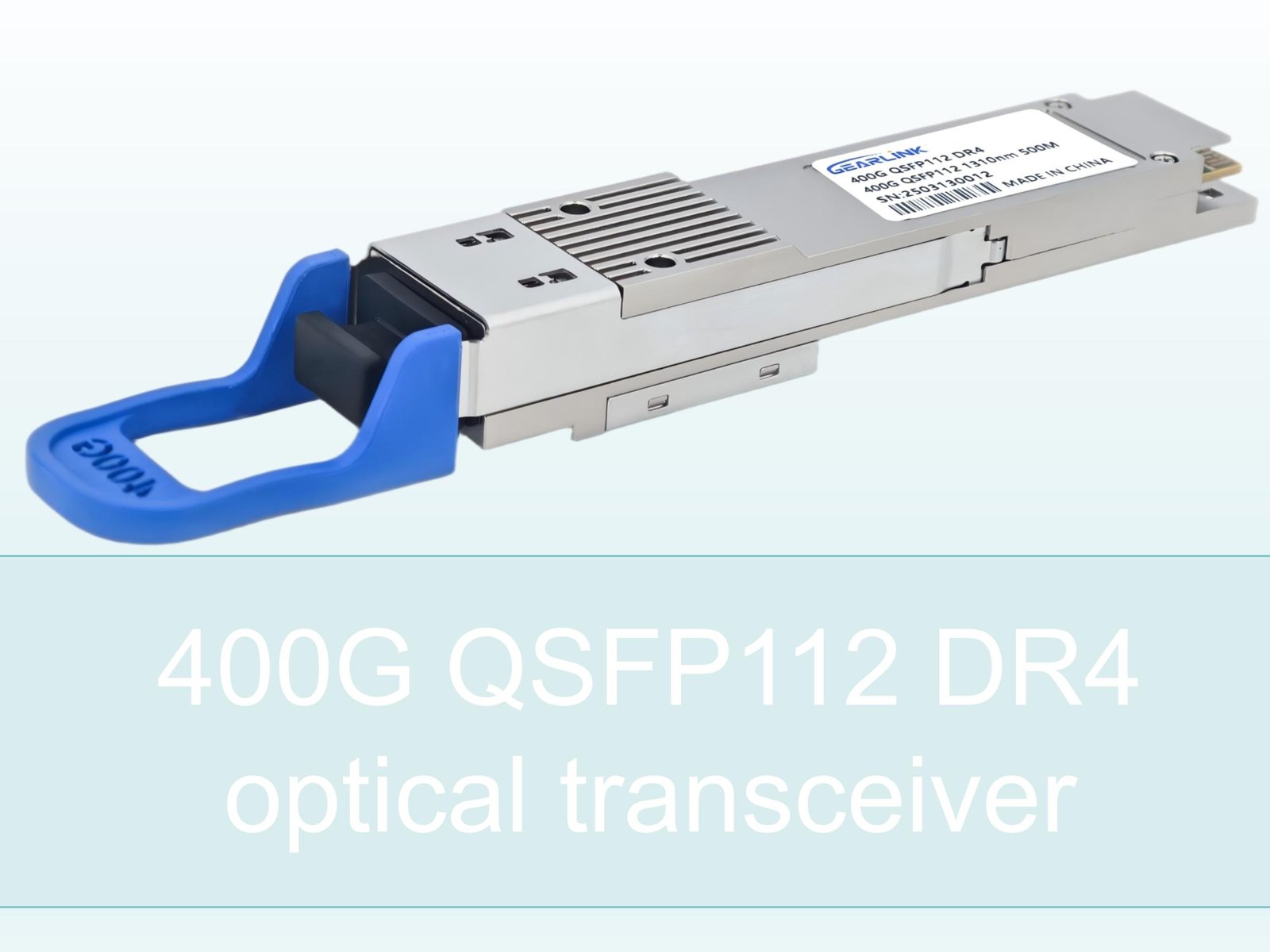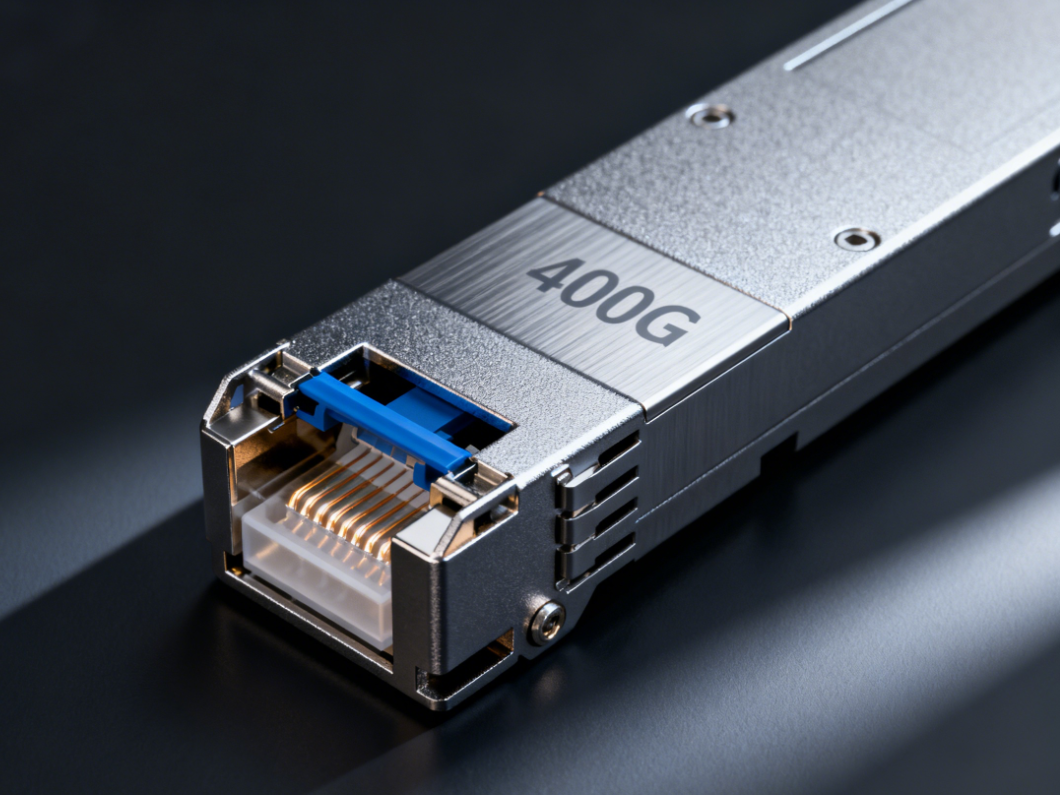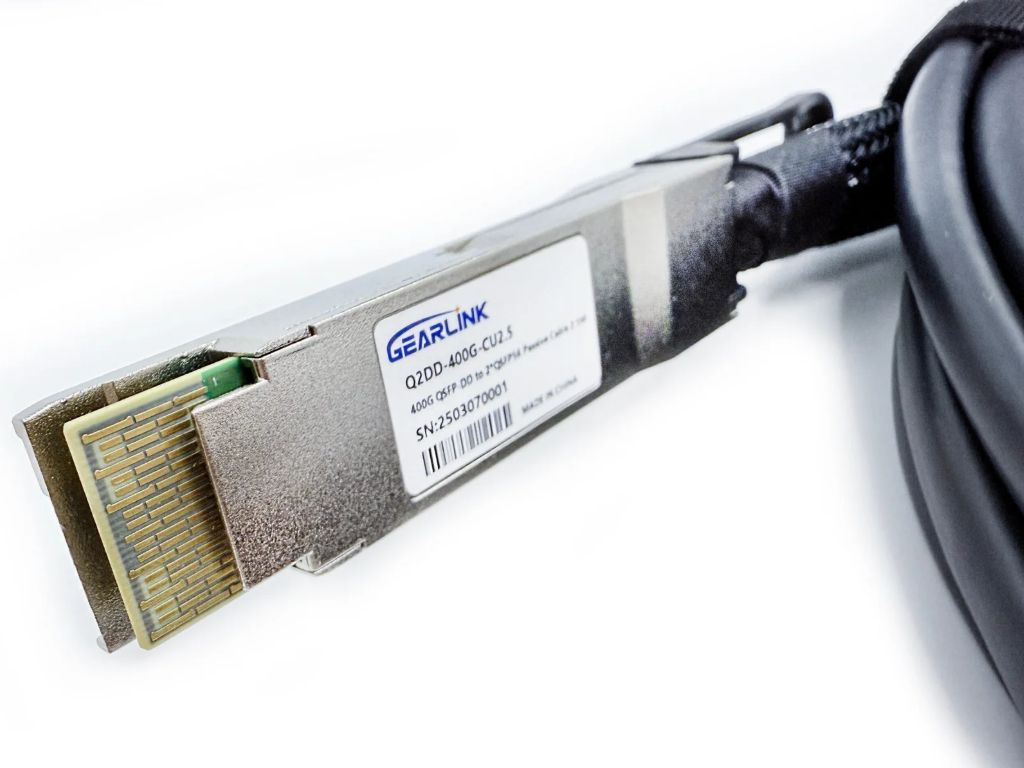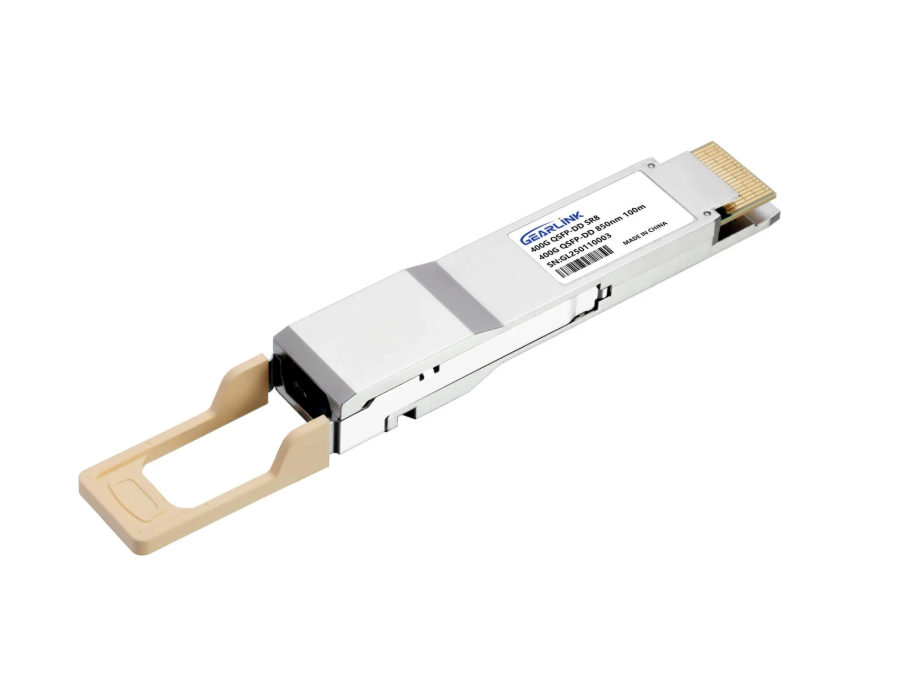The QSFP 200G SR4 S transceiver represents one of the most efficient, high-speed, and compact optical modules for short-range data center connections. Designed for 200-gigabit Ethernet applications, it enables low-latency communication between switches, servers, and AI clusters.
In this guide, you’ll learn everything about QSFP 200G SR4 S — its key specifications, advantages, use cases, deployment methods, and how it compares with other 200G optical modules.
Understanding the Basics of QSFP 200G SR4 S
Before diving into details, let’s decode the terminology behind QSFP 200G SR4 S.
| Term | Meaning | Description |
| QSFP | Quad Small Form-Factor Pluggable | A compact form factor used for high-speed network modules |
| 200G | 200 Gigabits per second | Total data throughput (4× 50 Gbps lanes) |
| SR4 | Short-Range (4 lanes) | Parallel multimode transmission over four fibers |
In simple terms, a QSFP 200G SR4 S is a 200 Gbps optical transceiver operating over multimode fiber (MMF) using PAM4 modulation and MPO-12 connectors. It typically supports 100 m on OM4 fiber and 70 m on OM3.
Key Specifications of QSFP 200G SR4 S
| Parameter | Typical Value | Notes |
| Wavelength | 850 nm | Standard for SR4 modules |
| Transmission Distance | 70 m (OM3), 100 m (OM4) | With FEC enabled |
| Fiber Type | Multimode (OM3/OM4/OM5) | Parallel MPO connection |
| Connector | MPO-12 / MTP-12 | Supports 4 transmit + 4 receive lanes |
| Modulation | PAM4 | 50 Gbps per lane |
| Power Consumption | < 5 W | Energy-efficient operation |
| Compatibility | QSFP56 ports | Uses CMIS 4.0 or higher |
These specifications make the QSFP 200G SR4 S ideal for high-density environments like AI clusters, spine-leaf switches, and short-range aggregation networks.
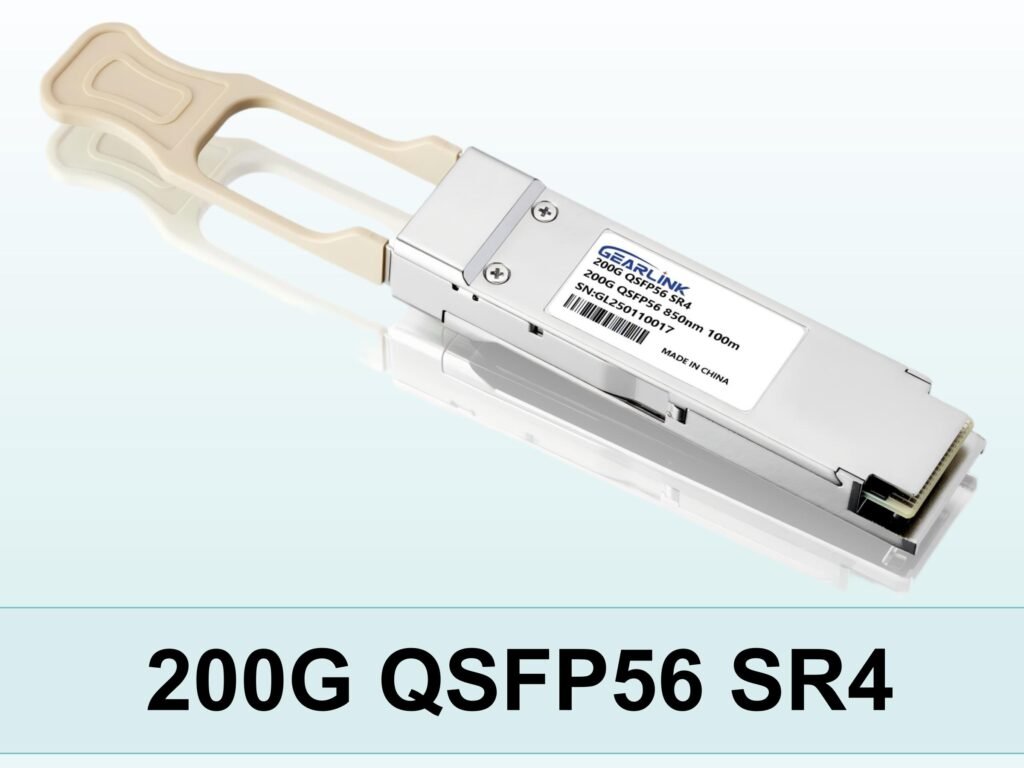
Why Choose QSFP 200G SR4 S?
Transitioning to QSFP 200G SR4 S brings multiple benefits across cost, performance, and scalability.
1. High Bandwidth Density
Each module delivers 200 Gbps in the same physical slot as a 100G transceiver. This doubles port density without expanding switch space.
2. Cost Efficiency
Compared to long-reach (FR4/LR4) optics, QSFP 200G SR4 S modules cost significantly less and use inexpensive multimode fibers, reducing total infrastructure cost.
3. Seamless Upgrade Path
Existing 100G SR4 infrastructure can often be reused. The same MPO-12 connectors and OM4 fibers work with QSFP 200G SR4 S, simplifying 100G → 200G upgrades.
4. Energy Efficiency
Low-power PAM4 modulation and optimized VCSEL transmitters allow power consumption below 5 W, minimizing rack heat and cooling demands.
5. Flexibility for Breakout Links
Some devices allow 4× 50G breakout from a single QSFP 200G SR4 S port — perfect for connecting multiple lower-speed endpoints.
Comparison with Other 200G Optical Modules
| Feature | QSFP 200G SR4 S | QSFP 200G FR4 | QSFP 200G LR4 |
| Fiber Type | Multimode (OM3/OM4) | Single-mode | Single-mode |
| Reach | Up to 100 m | Up to 2 km | Up to 10 km |
| Connector | MPO-12 | Duplex LC | MPO-12 |
| Power | < 5 W | ~6–7 W | ~8 W |
| Cost | ★ Low | ★★ Medium | ★★★ High |
| Typical Use | TOR / Leaf-Spine | Aggregation / Metro | Long SMF links |
This table highlights that QSFP 200G SR4 S is optimized for short-range, high-density, low-cost environments, while FR4 and DR4 serve longer distances.
Practical Applications of QSFP 200G SR4 S
1. Data Center Interconnects (DCI):
Used between leaf and spine switches for 50–100 m links.
2. AI / HPC Clusters:
Supports GPU-to-GPU or server interconnections demanding 200 Gbps bandwidth per link.
3. Cloud Computing Infrastructure:
Ideal for hyperscale environments transitioning from 100G to 200G Ethernet.
4. Enterprise Core Networks:
Provides a scalable upgrade path without requiring new cabling systems.
5. Test & Measurement Systems:
Used in labs and OEM setups for validating 200G PAM4 interfaces.
Deployment Best Practices
To maximize reliability and link performance, follow these steps before installing QSFP 200G SR4 S modules:
Test Fiber Link Loss: Keep insertion loss below 1.9 dB for MPO systems.
Clean Connectors: MPO connectors are highly sensitive to dust.
Verify Fiber Polarity: Correct Type-B polarity ensures proper TX/RX alignment.
Use Quality Patch Cables: Prefer OM4 or OM5 fibers for margin stability.
Monitor DDM/DOM Data: Regularly check module temperature and optical power.
Plan for Cooling: Maintain ambient airflow for high-density racks.
Ensure Compatibility: Confirm switch supports QSFP56 and CMIS protocol.
Common Challenges & Solutions
| Challenge | Description | Recommended Action |
| Fiber Skew | Delay variation between parallel fibers | Use factory-matched ribbon cables |
| Connector Damage | MPO pins can misalign | Use alignment guide plates |
| Interoperability Issues | Vendor-coded firmware mismatch | Use MSA-compliant modules |
| Thermal Load | High rack density raises heat | Add front-to-back airflow |
| Signal Loss | Poor polishing or dirty ferrules | Regular inspection & cleaning |
Through preventive maintenance and link validation, QSFP 200G SR4 S links remain highly stable even under heavy workloads.
Performance Overview
| Metric | Typical Value | Remarks |
| Data Rate | 4 × 50 Gbps (PAM4) | Aggregate 200 Gbps |
| BER (with FEC) | ≤ 1 × 10⁻¹² | After forward error correction |
| Latency | < 200 ns | Low-latency transmission |
| Operating Temperature | 0 – 70 °C | Standard commercial range |
| Reliability (MTBF) | > 1 million hours | High operational stability |
Even under continuous 24/7 data flow, QSFP 200G SR4 S modules demonstrate outstanding durability and optical stability.
Market Availability & Vendor Options
Popular Vendors Include:
Cisco QSFP-200G-SR4-S — 100 m on OM4, breakout supported
FS 200G QSFP56 SR4 — MTP/MPO 12, < 4.5 W power draw
Arista 200G SR4 — 850 nm VCSEL, hot-pluggable
Gigalight QSFP56 SR4 — multi-vendor compatibility
Fiberstamp 200G SR4 Immersible — designed for liquid-cooled racks
These options provide wide interoperability across modern 200G-capable switches and NICs.
When Not to Use QSFP 200G SR4 S
Avoid QSFP 200G SR4 S in cases such as:
Required reach exceeds 100 m.
You use single-mode fiber plants.
Cost per bit favors DACs or AOCs under 3 m.
Platform lacks QSFP56 support.
In these scenarios, 200G DR4 or FR4 optics may be more suitable.
Future Outlook
As AI clusters and data center networks evolve toward 400G and 800G, the QSFP 200G SR4 S still plays an essential role for transitional stages. Its ability to reuse fiber, minimize power, and deliver 200G speeds efficiently ensures it remains cost-effective through 2027+.
Conclusion
The QSFP 200G SR4 S module combines speed, density, and efficiency for today’s high-performance data centers.
Its short-reach multimode design, simple deployment, and backward compatibility make it one of the most balanced 200G solutions available.
Whether upgrading existing 100G infrastructure or building new 200G clusters, adopting QSFP 200G SR4 S provides a solid foundation for scalable, high-bandwidth networking.
Frequently Asked Questions
Q1: What is the maximum transmission distance of QSFP 200G SR4 S?
A1: Up to 100 m on OM4 and 70 m on OM3 with FEC enabled.
Q2: Is QSFP 200G SR4 S compatible with older QSFP28 ports?
A2: No. It requires QSFP56 or CMIS 4.0-compliant ports.
Q3: Can QSFP 200G SR4 S be used in breakout mode?
A3: Yes, some switches allow 4× 50 G breakout configurations.
Q4: What fiber type should I use?
A4: Use OM4 or OM5 multimode fiber for best performance.
Q5: What is the typical power consumption?
A5: Most QSFP 200G SR4 S modules consume under 5 W, ideal for high-density racks.
